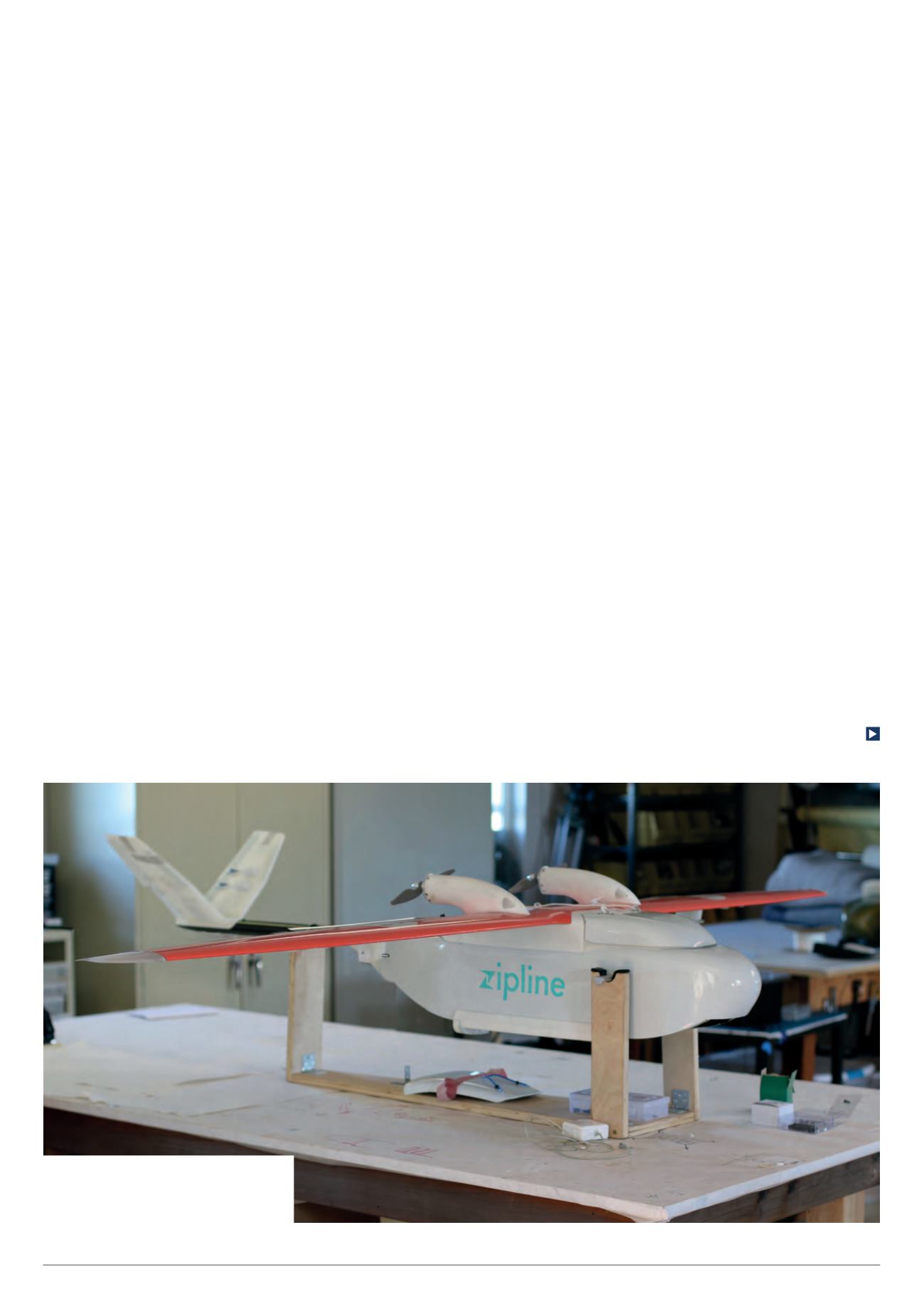

75
UAVs
|
Insight
to work on collision detection algorithms
for image sensors on its UAVs.
There is now a move in the delivery
sector to using fixed-wing platforms
for longer range, but that brings with it
the problem of how to land to make a
delivery. Start-up Zipline is getting around
this by dropping small loads such as
vaccines by parachute from its dual-
engine fixed-wing aircraft, called Zip.
The company has raised $18m over the
past five years to deliver health-related
packages across Rwanda, teaming up
with delivery company UPS.
When the service starts in the
summer of 2016, a health worker will
place an order by text message. Within
minutes, a Zip will be prepared and
sent to the destination, travelling at up
to 100 kph. The medical products will
then be dropped off, landing gently at
the health facility in an open area the
size of a few parking spaces, and the
Zip returns to base. This will provide
on-demand delivery of blood products
to the 20 hospitals and health centres in
the country, in what will be the world’s
first commercial UAV delivery service.
Another start-up, Pouncer, aims to
use autonomous fixed-wing craft to
fly supplies into disaster areas. They
will be built from food materials and
launched from a larger aircraft to land
in the disaster zone, providing food and
equipment quickly and easily (see In
conversation,
UST
7, April/May 2016).
Swarm
The idea of a swarm of UAVs is being
extended in several ways. For example,
US research agency DARPA has
commissioned four manufacturers to
build its Gremlins system that consists
of a number of small, reusable and
coordinated UAVs that would be
launched from a large manned, or
even unmanned, aircraft to perform
surveillance over a wide area before
returning to the aircraft. They would
be deployed with a mixture of mission
payloads capable of monitoring and
surveillance in a distributed and
coordinated manner.
The Phase 1 contracts have been
awarded to four teams, whose proposals
cover a range of technical approaches.
“We’ve assembled a motivated group
of researchers and developers that we
believe could make significant progress
towards the Gremlins’ vision of delivering
distributed airborne capabilities in
a robust, responsive and affordable
manner,” says Dan Patt, DARPA
programme manager.
The teams are exploring different,
innovative approaches for technologies
in launch and recovery techniques,
equipment and aircraft integration, as
well as low-cost, limited-life airframe
designs that use existing technology and
require only modest modifications to
current aircraft. The Gremlins would be
used up to 20 times each.
The move to swarm operation means
that more innovation is needed in
precision digital flight control, relative
navigation and station-keeping. The
teams modifying their existing platforms
are Composite Engineering in Roseville,
California; Dynetics in Huntsville,
Alabama; General Atomics Aeronautical
Systems in San Diego, California; and
Lockheed Martin in Dallas, Texas.
DARPA says the expected lifetime of
about 20 uses could provide significant
cost advantages over expendable
systems by reducing payload and
Unmanned Systems Technology
| June/July 2016
The Zip UAV will be the first commercial
delivery UAV in the world, providing blood
products to health clinics across Rwanda in
the summer of 2016 (Courtesy of Zipline)









